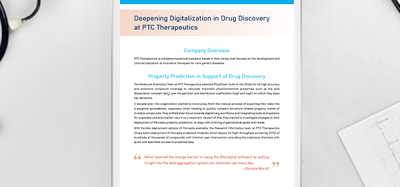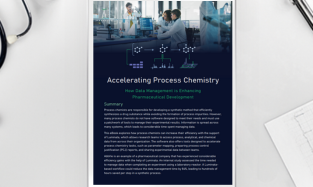Abbott announces CE Mark for test to aid doctors with diagnosing and monitoring diabetes
Posted: 9 May 2013 | European Pharmaceutical Review | No comments yet
Abbott today announced CE Marking (Conformité Européenne) for the ARCHITECT clinical chemistry Hemoglobin A1c (HbA1c) test, which may aid physicians in diagnosing and monitoring diabetes as well as identifying patients at risk for developing diabetes.
As of 2012, more than 371 million people worldwide were living with diabetes and half of the people with diabetes remained undiagnosed. If left undiagnosed or not properly managed, diabetes can cause serious health complications.1
The HbA1c test is a blood test that reflects a person’s average blood glucose levels over the past three months. In 2009, an international expert committee recommended that physicians may use an HbA1c test for the diagnosis of type 2 diabetes and identification of patients at risk for developing diabetes if the assay meets specific performance criteria, such as certification and standardization processes outlined by the National Glycohemoglobin Standardization Program (NGSP) and the International Federation of Clinical Chemistry (IFCC).
“The new ARCHITECT clinical chemistry Hemoglobin A1c test provides physicians with important information that may help patients take critical steps to manage the progression of this very serious disease,” said Christian Fischer, senior medical director, Diagnostics Products, Abbott.
Diabetes can be managed by using diabetes medicines, making important lifestyle changes related to diet and exercise, and monitoring blood glucose and HbA1c levels.2 For people whose HbA1c test results are normal, doctors may recommend that testing be repeated at least every three years or more frequently depending on a person’s initial results and risk status.2
“When diabetes is not managed properly, it can lead to damage of important systems in the body, including the heart, kidneys, and eyes, and even cause life-threatening complications,” said Brian Blaser, executive vice president, Diagnostics Products, Abbott. “With the CE Mark of Abbott’s ARCHITECT clinical chemistry HbA1c test, we are pleased to offer this valuable tool to help doctors diagnose diabetes and identify patients at-risk for developing diabetes. Doctors can use this information to improve patient care.”
The ARCHITECT clinical chemistry HbA1c test is available in several countries throughout Europe, Asia, Latin America, Canada and Africa, pending country registration. Abbott recently filed for 510(k) clearance with the U.S. Food and Drug Administration.
Intended use
The ARCHITECT HbA1c assay is used in clinical laboratories for the quantitative in vitro measurement of the percent hemoglobin A1c or HbA1c fraction in human whole blood and hemolysate on the ARCHITECT c8000 and c4000 Systems.
Hemoglobin A1c measurements are used as an aid in the diagnosis of diabetes mellitus, to identify patients who may be at risk for developing diabetes mellitus, and for the monitoring of long-term blood glucose control in individuals with diabetes mellitus. Hemoglobin A1c should not be used for the diagnosis of diabetes in patients with abnormal red cell turnover, such as pregnancy, recent blood loss or transfusion, or some types of anemia.2
About diabetes and patients at risk for diabetes
Diabetes occurs when the body does not produce enough insulin or when the body cannot effectively use the insulin it produces. Insulin is a hormone that helps the body use glucose (sugar) for energy. People with blood glucose levels that are higher than normal, but not high enough for a diagnosis of diabetes, are at increased risk for developing type 2 diabetes.3
Worldwide more than four million people died due to diabetes in 2012, which is roughly one person every eight seconds. Of the more than four million people in the world who died due to diabetes in 2012, half were under the age of 60. In 2012, $471 billion United States dollars were spent globally as a result of diabetes.1
About Abbott’s commitment to diabetes
Abbott markets a number of products to aid in the diagnosis, monitoring and treatment of diabetes. Abbott’s ARCHITECT systems and i-STAT feature various tests to diagnose diabetes and monitor glucose levels in the hospital and laboratory settings. Its FreeStyle line of blood glucose monitors – including Precision and Optium – are easy-to-use, require small blood samples and provide fast and accurate test results. Glucerna shakes and bars are formulated for people with diabetes to help manage blood glucose levels as part of a diabetes management plan.
About Abbott diagnostics
Abbott is a global leader in in vitro diagnostics and offers a broad range of innovative instrument systems and tests for hospitals, reference labs, molecular labs, blood banks, physician offices and clinics. With more than 22,000 customers in more than 100 countries, Abbott’s diagnostic products offer customers automation, convenience, bedside testing, cost effectiveness and flexibility. Abbott has helped transform the practice of medical diagnosis from an art to a science through the company’s commitment to improving patient care and lowering costs.
References
- International Diabetes Federation. IDF Diabetes Atlas, 5th edn. Brussels, Belgium: International Diabetes Federation, 2011. http://www.idf.org/diabetesatlas. Accessed March 20, 2013.
- The A1C Test and Diabetes. National Diabetes Information Clearinghouse. U.S. Department of Health and Human Services. June 2012.
- Diagnosis of Diabetes and Prediabetes; National Diabetes Information Clearinghouse. U.S. Department of Health and Human Services. July 2012.









